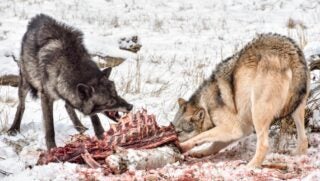A group of California winegrowers recently announced the establishment of a Center for Ag Sustainability to protect and advance farming not only in Sonoma County, but also in the hopes to revolutionize grape growing and the larger wine industry across the globe.
“We have long recognized that our job as farmers is to preserve and protect our agricultural legacy and way of life for future generations. The reality is that ag is on the brink of a crisis. Not only are thousands of acres of farmland being lost to development in California every year, but there are serious threats to the financial viability of our businesses due to increased regulations, rising labor costs, new overtime requirements, drought and more,” said Karissa Kruse, president of the Sonoma County Winegrowers. “Clearly, the status quo is not an effective strategy moving forward. We must look to lead on addressing these pressing issues and new ones that will emerge to ensure our continued success and the preservation of agriculture in Sonoma County.”
The Sonoma County Center for Ag Sustainability will be a strategic think tank to help develop innovative ideas and strategies to strengthen and build upon the region’s sustainability efforts and its 100-Year Business Plan to Preserve Agriculture. Understanding that it takes creative, thought provoking, and out-of-the-box thinking to solve some of the critical challenges facing Sonoma County’s agricultural community, the Sonoma County Winegrowers are creating a groundbreaking program that will bring together a small, diverse group of thought leaders and experts from across various business industries, subject matters, academia, job functions, and skill sets, and other unique backgrounds, to problem solve and develop new, fresh ideas.
The Sonoma County Center for Ag Sustainability will kick-off as a two-year program starting in January 2017. The first six months will be used to determine who will be invited to participate in order to create a diverse group of subject matter experts who can bring new thinking to one of the oldest professions in the world.
Throughout the program, the Sonoma County Winegrowers will share learning and progress broadly, which will culminate in a White Paper which will be published providing the insights and learnings to a global audience. These findings and ideas will also be incorporated into the Sonoma County Winegrowers strategic plan, marketing and branding efforts, and other areas of the organization that will guide their focus on the preservation of agriculture.
Sonoma County Winegrowers are quickly closing in on its goal of becoming the nation’s first 100 percent sustainable wine region by 2019. According to the latest Report Card published in the Sonoma County Winegrowers’ 3rd Annual Sustainability Report, 85 percent of the county’s vineyard acres have completed the sustainability self-assessment – the first step in achieving certification. In addition, 60 percent of the vineyard acreage in the county – more than 34,000 acres – has been certified sustainable.
Governor Jerry Brown recognized the Sonoma County Winegrowers sustainability commitment and their progress with the awarding of California’s highest environmental honor, the Governor’s Environmental and Economic Leadership Award (GEELA) in January of 2016.
“Sonoma County is blessed with great leaders in the wine community who have championed our sustainable efforts and embraced our vision to make sure we are leaders in all aspects of sustainability, especially social responsibility,” said Kruse. “We continue to hear from sommeliers, wine retailers, restaurants owners, and wine consumers that the sustainable approach we’re taking that emphasizes our people and community is becoming increasingly important throughout the country and around the world. Sonoma County is proud to be recognized as a sustainability leader in the global wine community.”


